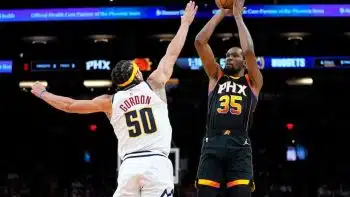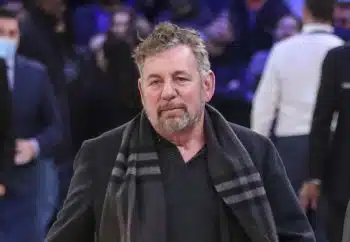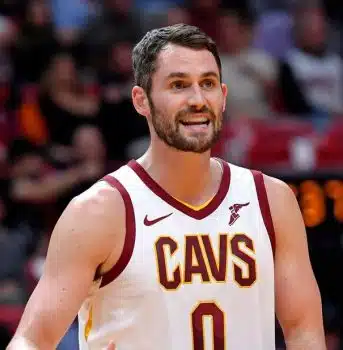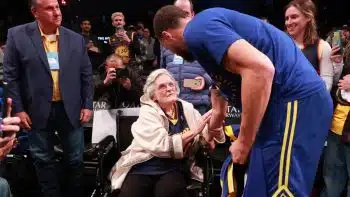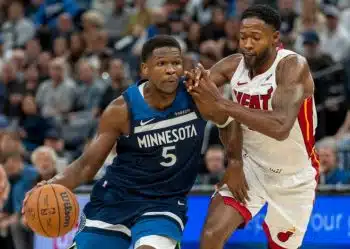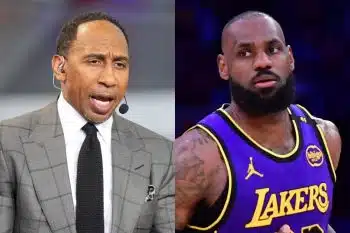NBA
Grading Each Team’s 2016 NBA Draft
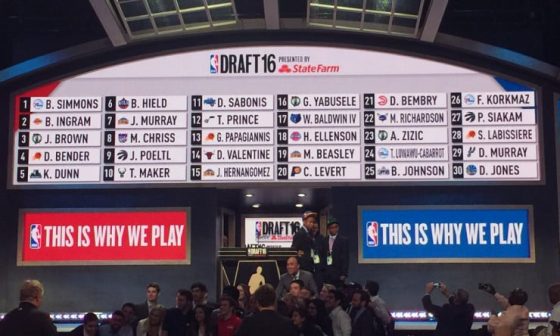
Grading the NBA Draft is an annual tradition that virtually every media outlet does. For years, we have taken a somewhat different approach to grading the draft, mainly because a drafted player’s results aren’t truly known for years. While it’s easy to say, ‘This guys is a surefire star,’ there is no way to really know that for several years.
With that in mind I tend to apply a bit of a different value structure to my draft grades. I base my grades on the following:
a.) Did the team draft the best possible talent on the board?
b.) Did the team solve an immediate roster need?
c.) Can the selected player contribute right away?
Let’s jump into it:
Atlanta Hawks
Round 1: Taurean Prince (12), DeAndre Bembry (21)
Round 2: Isaia Cordinier (44)
The biggest move for the Hawks occurred prior to the draft when they dealt away Jeff Teague for the 12th pick, which they turned into Taurean Prince.
Prince gives them a truly ready-to-play option at small forward and a fairly decent shooter as well. This was good value for the pick, it solves an immediate roster problem and he can play right away – and likely will for the Hawks.
Bembry was interesting. There may have been a few better options on the board at No. 21 worth looking at, but Bembry is an NBA-ready player. It’s unclear where he fits in the rotation, but he could add solid playing and shooting from the bench. Overall, this is a fairly decent selection.
Isaia Cordinier at No. 44 is not a factor this year. Cordinier is an athletic prospect with some upside, but he was likely a draft-and-stash. Considering what was there at No. 44, the Hawks could have done a little better. But at that point in the draft, especially with a draft-and-stash prospect, this wasn’t bad.
GRADE: B-
Boston Celtics
Round 1: Jaylen Brown (3), Guerschon Yabusele (16), Ante Zizic (23)
Round 2: Demetrius Jackson (45), Ben Bentil (51), Abdel Nader (58)
This was not the way Celtics fans had hoped the draft would play out, but when you can’t find takers for all the picks, you eventually have to use them and Boston did a good job.
Jaylen Brown was Danny Ainge’s guy from very early in this process. There was a sense the C’s were drafting Kris Dunn to hold him hostage for additional assets, but in the end the C’s went with their plan and drafted Brown. He is a super athlete with a very high basketball IQ. He’ll improve in time as a shooter, but is a very good piece for the Celtics. In terms of value, there may have been a few better options on the board so the C’s get dinged a little there, but in terms of solving roster problems, he adds depth at small forward and he can play right away.
Guerschon Yabusele is a monster. He’s big and athletic and was a rising star among NBA teams during the final weeks of the draft process. Like Terry Rozier last year, if the C’s wanted him they had to take him at No. 16 or he’d have been gone by No. 23. There is tremendous upside to his game and while there were a few better prospects on the board, the C’s did pretty well here. He may or may not play this year, so that’s to be determined. As for roster need, he does not slot into an immediate hole at this time.
Ante Zizic was also a nice get for the C’s, as he is one of the best rounders in the draft he was considered the top Euro player after Dragan Bender by most NBA teams, so that’s a ton of value for the C’s at 23. Like Yabusele, he could play abroad next season, which impacts the grade a little. As for roster need, if he plays he could slot in at center and that’s an areas the C’s need to improve on.
Demetrius Jackson took a pretty big tumble and the C’s don’t have a need for him anywhere, as they are loaded at the guard spots. It’s hard to imagine that Jackson makes the active roster and may end up spending the bulk of his rookie year in the D-League. There was value to be had in the pick, but the last thing the C’s needed was another guard.
Ben Bentil was a good get at 51. He is an electric scorer, but like Jackson there simply may not be a place for him on the C’s roster without a trade of some kind.
Abdel Nader was a good late-round draft pick; however, like the others drafted in the second round, he may end up in the D-League all year with little chance of making the C’s roster.
Give that the C’s were swinging for the fences, this draft seems like a letdown, but overall the talent the C’s selected was good and it fits in with the roster they have; it just was not a very sexy draft.
GRADE: B+
Brooklyn Nets
Round 1: Caris LeVert (20)
Round 2: Isaiah Whitehead (42)
The Nets traded away forward Thaddeus Young for the rights to the 20th pick, which they used on Caris LeVert. LaVert is still recovering from a foot surgery and said he likely won’t be playing in summer league, but is ahead of schedule on his rehab.
On the surface, this was terrible return for Young, but as we saw leading up to the draft veteran players were not returning nearly the value they should be. It gets compounded when you look at LaVert’s injury history and the fact he may not be ready for camp.
In the long-term, LaVert is a very interesting prospect with tremendous upside, if he can overcome the injuries. For grading purposes, this is pretty good value at 20, if LaVert overcomes the injuries, which all indications are he will. He does fill an immediate need and could end up starting for the Nets once he’s healthy. There were less risky options on the board, but LaVert does have the best upside.
Nabbing Isaiah Whitehead was great value. He can likely contribute right away, and given what’s on the roster now, he too could end up playing big minutes in Brooklyn. As for value, they did a great job and I’m not sure there was a better talent on the board. Plus, he can play a big role.
Overall, the Nets got two promising young players in the draft; the tough part is they did not get very much value out of Thad Young, especially when you look at the haul Oklahoma City got for Serge Ibaka from the Orlando Magic. That’s not a real factor in the draft grade, but it was worth noting.
GRADE: B-
Charlotte Hornets
Round 1: N/A
Round 2: N/A
Eh, I get it. The Hornets wanted another veteran and opted to trade what ended up being Malachi Richardson for veteran shooter Marco Belinelli. To be far, while Belinelli is a known quantity, there were players on the board at 22 who could have helped the Hornets, and at a lower cost.
Trading out of the draft usually earns a team an incomplete grade, but in this case it’s hard not to ding the Hornets because they did not get better in the short-term in this deal. We’ll see what the Hornets do with the roster spot, but overall this does not look like a good move.
GRADE: D-
Chicago Bulls
Round 1: Denzel Valentine (14)
Round 2: Paul Zipser (48)
The biggest part of the Bulls’ draft was trading away Derrick Rose to the New York Knicks in exchange for Robin Lopez, Jerian Grant and Jose Calderon. That’s not a factor in their draft grade, but it was the teeth of their plans around the draft.
At 14, the Bulls drafted Denzel Valentine who may be the most ready-to-play player in the draft pool. There were concerns over the long-term status of his knees, but the Bulls did not seem to care. If he ends up having knee issues or can’t stay durable this pick turns bad quickly, but if everything Valentine is saying is true, he could be a steal for the Bulls. Valentine does solve an immediate need, he likely can play right away and was tremendous value for the pick.
Paul Zipser at 48 most likely stays in Europe. He was a standout at Eurocamp in Italy and looks like a solid upside guy. Again, good value for the pick especially in a draft-and-stash situation. He likely does not help the Bulls this season and does not solve a roster problem.
The Bulls wanted to make a substantial change to the roster and they did that. The question is, will this make them a better team?
GRADE: B+
Cleveland Cavaliers
Round 1: N/A
Round 2: Kay Felder (54)
Considering the Cavaliers came into the draft with no picks top speak of, trading for Kay Felder was a nice get. Fans and teams alike rave about Felder as an athlete and a player so there is nothing but upside for the Cavs in this move.
From a grading point of view, at 54 this is solid talent. From a roster point of view, maybe he gets a chance if Matt Dellavedova exits via free agency. From a fills a role right away standpoint? Maybe. The Cavaliers like to have a young guy or two on the roster mainly for the veterans to have young guys around. LeBron James has history of taking a young guy under his wing virtually every season, ans this year it could be Felder – although roster spots are going to be hard to come by so the reality is Felder could more likely be in the D-League next year than on the Cavs’ roster.
GRADE: C+
Dallas Mavericks
Round 1: N/A
Round 2: A.J. Hammons (46)
The Mavericks kicked around the idea of trading into the teens; in fact, at the 11th hour, there were doing as much recon work as anyone. In the end the Mavs stayed the course and landed A.J. Hammons.
Hammons has a lot of upside. He is a still big man with a solid feel for the game. Some teams had Hammons graded as a late-first rounder, so this is good value for the Mavericks at 46. It’s unlikely that Hammons makes the final Mavericks roster and he is most likely headed to the D-League. From a grading perspective, it’s good value but does not mean much to the roster this year and does not fill an immediate need.
GRADE: C+
Denver Nuggets
Round 1: Jamal Murray (7), Juan Hernangomez (15), Malik Beasley (19)
Round 2: Petr Cornelie (53)
This one is a mixed bag, mainly because the Nuggets have so much duplication on the roster right now. That said, getting Jamal Murray at 7 was great value. Not sure where he fits on the roster, but he is a solid get in the talent department. He can help right away and he was best value on the board.
Juan Hernangomez is arguably one of my favorite guys in the middle of this draft. He could help right away, although they are still talking about whether he’ll come this year or not, so that’s still up in the air. He was very good value for the pick. There were a few others on the board there, but Hernangomez may have the best upside.
Malik Beasley at 19 is a solid get for the Nuggets, but again where he fits and finds minutes going forward remains to be seen. The Nuggets are loaded everywhere so he may not get the chance to play a big role right away, but he could if they wanted to play him that way. There were a few guys on the board at 19 that might have made more sense, but overall this is a good pick for the Nuggets.
GRADE: B-
Detroit Pistons
Round 1: Henry Ellenson (18)
Round 2: Michael Gbinije (49)
The Pistons went safe at 18. Ellenson is a solid addition and him being there at 18 was a bit of a surprise. This was good value for the pick. It’s unclear what role he’ll play, as its likely going to be behind Tobias Harris and Marcus Morris but in time this is a quality addition in the talent department. I’m not sure the Pistons could have done better in terms of value for the pick.
Michael Gbinije at 49 was a steal. I think he can play right away for Stan Van Gundy, although his role may be limited. Typically the 49 pick does not yield much, so the Pistons got solid value there.
Neither guy is a starter for the Pistons so there is that, but overall for what could amount to two solid bench additions, the Pistons did well.
GRADE: B+
Golden State Warriors
Round 1: Damian Jones (30)
Round 2: Patrick McCaw (38)
Considering the Warriors don’t have many needs, getting Damian Jones at 30 was good value. He’ll give them frontcourt options if the team decides to stretch Andrew Bogut to create cap room for a free agent (or in the event of an injury). At 30, that was decent value for the pick. He brings something to the bench, and there wasn’t a ton on the board that was better for the Warriors’ roster.
Patrick McCaw at 38 might be a sneaky play for the Warriors. Among the next tier of prospects, a lot of NBA executives pegged McCaw as a super upside guy and he can bring a few things to the roster if he indeed makes the team. Overall, this was good value for both picks. Neither guy is a starter, but both could play a good role for the Warriors.
GRADE: A-
Houston Rockets
Round 1: N/A
Round 2: Chinanu Onuaku (37), Zhou Qi (43)
Chinanu Onuaku was a good get at 38, but it’s not clear how much value he brings to the roster that’s already loaded with similarly skilled guys. Does Onuaku get more of a chance than say Montrezl Harrell? Aren’t they awfully similar guys? Overall, drafting size and physicality for a team likely losing Dwight Howard to free agency isn’t bad.
As for Zhou Qi, it’s more likely than not he’s back in China next year playing in the CBA. He has a great skill set, with a lot of potential and surely the Rockets’ huge following in China didn’t hurt this decision.
Overall, the Rockets did not obtain anyone who really matters to their roster next year, nor will either likely play a role. The value for where they spent those picks was good, but overall there isn’t a ton here to get excited about (at least right away).
GRADE: C+
Indiana Pacers
Round 1: N/A
Round 2: Georges Niang (50)
The Pacers biggest moves were not in the form of draft picks, rather in the veterans they traded for. The Pacers shipped off George Hill in a three-team deal with Atlanta and Utah landing them Jeff Teague and then dealt away the 20 pick to the Nets for Thaddeus Young. That trade will get completed when the new cap year opens on July 7.
So this draft wasn’t about getting young guys, rather landing impact veterans.
However, landing Georges Niang at 50 wasn’t a terrible pickup. He has some upside although it might be a stretch that he actually makes the roster. Considering most picks in the 50s end up being D-League guys or draft-and-stash players, Niang is pretty skilled and could be a dark horse for a final roster spot if he does well in Summer League.
While the Pacers improved themselves dramatically, their draft grade is not reflective of that. The draft grade is about the players actually drafted and in this case, it may not be of much impact.
GRADE: C+
Los Angeles Clippers
Round 1: Brice Johnson (25)
Round 2: David Michineau (39), Diamond Stone (40)
In a draft as flat as this one, it’s hard to find talent with the 25, however the Clippers did pretty well with Brice Johnson. There were a few polarizing players in this draft and Johnson was one of them, some labeled him as a tweener, while some raved about his all-around versatility. At 25 this was good value for the pick, because there wasn’t a lot of better options. Johnson likely plays a role off the bench for the Clips, which fills a need.
While Johnson was a great value at 25, David Michineau at 39 does not make a ton of sense. This may be a case of draft and stash, although the Clippers do need a point guard and Michineau could serve that role. There were better talents available at 39, but he does serve a role and could fill a need if he comes over this year.
Diamond Stone at 40 was good value. He was a first-round talent throughout the process but there were lingering questions that he could not shake in the draft process. This was good value at 40, he can play a role off the bench and he does fill an immediate need for a backup big.
Overall, this was a mixed bag for the Clippers.
GRADE: B-
Los Angeles Lakers
Round 1: Brandon Ingram (2)
Round 2: Ivica Zubac (32)
Not sure the Lakers could have done better, especially considering how much of a no-brainer Brandon Ingram was. Overall, his fit with what’s in L.A. now is outstanding and given that he’ll need a little time to develop physically, the Lakers’ roster can cover for him a little while he adjusts. Don’t expect Ingram to win Rookie of the Year, but he might be the first of this draft class to get serious All-Star votes in a couple of seasons.
At 32, the Lakers got a beast of a prospect in Ivica Zubac. He could be the low-post, rebounding-machine the Lakers need. The Lakers have eyes for Hassan Whiteside in free agency so Zubac could end up being the backup, which might not be a bad thing. As for quality of the pick, Zubac is great talent at No. 32. He can fill an immediate role for the Lakers and contribute right away, assuming he comes over this year as expected.
GRADE: A
Memphis Grizzlies
Round 1: Wade Baldwin (17)
Round 2: Deyonta Davis (32), Rade Zagorac (35), Wang Zhelin (57)
The Grizzlies did rather well in the draft. Wade Baldwin at 17 was a quality get, especially for a team that could lose their starting point guard in Mike Conley to free agency. Baldwin was a mixed bag among executives, some loved his versatility and maturity. Some were soured by his demeanor and lack of explosiveness. Overall at 17, getting a quality combo guard that’s a hard nose defender and leader on the floor is great value. Even if Conley stays, Baldwin could be a solid backup and he’ll contribute right away. The Grizzlies had a glaring need for another guard and Baldwin solves that too.
The Grizz traded for the draft rights to Deyonta Davis, this too was another quality pickup and he should flourish under the tutelage of Zach Randolph and Tony Allen. Davis took a hefty tumble on draft night mainly because teams were concerned about his basketball IQ and his overall feel for the game, especially at the NBA level. At No. 32, Davis can be brought along slowly. Nabbing a lottery-level talent that late in the draft is a huge get for the Grizzlies.
Rade Zagorac and Wang Zhelin are both draft-and-stash players, who may not see roster time in Memphis anytime soon, so neither is a major factor for the Grizz in their draft grade.
Overall, the Grizzlies did really well in nabbing two ready to contribute, high-talent players. This was a better outcome than most predicted.
GRADE: A-
Miami Heat
Round 1: N/A
Round 2: N/A
The HEAT traded out of this draft some time ago. While there was talk that Miami might try and trade into the second round, ultimately the HEAT sat this one out.
GRADE: Incomplete
Milwaukee Bucks
Round 1: Thon Maker (10)
Round 2: Malcolm Brogdon (36)
The Milwaukee Bucks were said to be less than thrilled with the upside of the guys everyone was slotting to them in the Mock Draft process. They were quality bench guys, but no one who could potentially impact the franchise. So at 10, the Bucks swung for the fences with Thon Maker.
Maker is actually a very good get for the Bucks. His length, shooting, shot blocking and overall upside are huge for a team that’s defined themselves on some gambles in the draft and in trade. There were concerns that over the last few years Maker had not added much to his lanky frame and that he really was not progressing like many believed he would, but in Milwaukee he’ll enter a pretty solid development program and have the benefit of lot of similarly aged players to grow together with.
This was definitely a reach in terms of grabbing him at 10, but unless the Bucks traded down, there was a better than average chance he’d have been scooped up when the teams with multiple picks came around for their second run. Maker does solve a roster need and he may be able to contribute right away from the bench. This was a risky pick for sure, but considering what was there, this was a dare-to-be-great move by the Bucks.
Conversely Malcolm Brogdon at 36 was a safe, smart and productive pick. There were some concerns about Brogdon’s foot from some teams, but his overall upside is still very high and he fits into the roster nicely. With the Bucks likely losing O.J. Mayo to free agency, Brogdon could fill that role nicely and he can really shoot the ball.
GRADE: B-
Minnesota Timberwolves
Round 1: Kris Dunn (5)
Round 2: N/A
There was talk all the way up to the draft that Boston was going to scoop up Kris Dunn and hold him hostage because it was so clear Minnesota wanted him. In the end, Boston went their own way and Dunn landed where he wanted to be.
For the Wolves, this is a great pick. Dunn fits into the puzzle nicely and gives Tom Thibodeau the defensive-minded floor leader he really coveted. Combined with Ricky Rubio, the Wolves have two point guards who could be very special together. There is a chance the Wolves trade Rubio at some point, especially after Dunn gets acclimated to the NBA, but in the short term the Wolves have another quality piece on the roster that could bring a lot of what was missing together.
Great value at the pick, solves an immediate need and will contribute. Outside of trading for a veteran like Jimmy Butler, this could not have gone better for the Wolves.
GRADE: A
New Orleans Pelicans
Round 1: Buddy Hield (6)
Round 2: Cheick Diallo (33)
Much like the Wolves, Buddy Hield to the Pelicans was telegraphed for weeks. There was a sense the Pelicans might have taken Jamal Murray but the appeal, fit and impact of Hield was too much to pass on for a Pelicans team desperate for impact shooting and leadership.
The Pelicans ended up trading their two second-round picks to move up and grab Cheick Diallo. He too should be a quality fit for the Pelicans front court that’s likely losing Ryan Anderson to free agency. While Diallo isn’t anything close to the shooter Anderson was, he does offer an interchangeable frontcourt piece to play next to Anthony Davis at either the four or the five.
This was a quality draft by the Pelicans, as they addressed real needs and got great value out of both picks (who they should contribute right away).
GRADE: A
New York Knicks
Round 1: N/A
Round 2: N/A
Landing Derrick Rose in a trade with Chicago that basically included non-core parts was a huge get for the Knicks, giving the roster a nice boost around the draft.
However, the Knicks traded away their draft picks some time ago, so missing out on this draft was somewhat planned, despite the Knicks telling a number of prospects they were going to trade into the first. Ultimately, the Knicks passed and stayed out.
Adding Rose was a quality upgrade, but the draft grade isn’t about trades.
GRADE: Incomplete
Oklahoma City Thunder
Round 1: Domantas Sabonis (11)
Round 2: Daniel Hamilton (56)
You have to hand it to Thunder GM Sam Presti, he is great at extracting value for his assets. It was clear to the Thunder that the end was coming for forward Serge Ibaka and the Thunder flipped him to Orlando in a haul that included guard Victor Oladipo, forward Ersan Ilyasova and the 11th pick. That pick ended up being Domantas Sabonis, whom the Thunder had locked in on pretty aggressively.
Sabonis is a good get for the Thunder, who have seen both Steven Adams and Enes Kanter emerge as quality roster components who were going to continue to edge out Ibaka. In Sabonis they get a different skill set and a quality passer and scorer.
Sabonis was good value at the 11 spot. He may not play a ton as a rookie, as the Thunder tend to lean on veterans more so than rookies, but in the long-term he is a great pick up for a Thunder team that always seems to be a year ahead of their needs when drafting players.
Daniel Hamilton was acquired in trade, but may be an interesting piece for the Thunder – although it’s more likely he’s in the D-League next season. Hamilton may be something to watch if he can refine his jump shot in the D-League, but given the Thunder’s current depth it’s unlikely he plays in the NBA next season.
GRADE: B+
Orlando Magic
Round 1: N/A
Round 2: Stephen Zimmerman (41)
The big move by the Magic was shipping out Victor Oladipo, Ersan Ilyasova and the 11th pick to the Thunder in exchange for Serge Ibaka. This move effectively took the Magic out of the 2016 Draft. Time will tell how smart the Ibaka move will be as he can be an unrestricted free agent next July.
As for what the Magic actually came away with, Stephen Zimmerman was viewed as a first-round talent, so getting him at 41 is a lot of value for that pick. He clearly adds to the roster, but it remains to be seen how much of a role he’ll play as a rookie. There were some concerns about Zimmerman’s long-term health leading up to the draft, which may be why he fell so far.
Overall, the Magic’s draft isn’t great given that they traded away two picks and only came away with Zimmerman. The Ibaka deal might be the game changing move the Magic needed, but that’s not a factor in draft grades.
GRADE: C-
Philadelphia 76ers
Round 1: Ben Simmons (1), Timothe Luwawu-Cabarrot (24), Furkan Korkmaz (26)
Round 2: N/A
Given that Ben Simmons was the prohibitive top pick, the 76ers taking him first overall was sort of a no-brainer. He was the best talent and the 76ers got him.
The problem is later in the draft, the 76ers drafted Timothe Luwawu and Furkan Korkmaz. While both are interesting prospects, neither seem to address the most glaring roster need: point guard.
The 76ers may well trade for a point guard as they get into free agency, especially if they miss out on top flight free agents, but the fact there were guys there at both picks that could have added something, these picks are a little head scratching unless both opt to stay in overseas.
The Simmons pick in itself makes this a great draft for the 76ers, but the fact they were not able to address any real needs at 24 and 26, it’s hard grade them extremely high. Both Luwawu and Korkmaz are good assets, it’s just unclear where they fit in the 76ers master plan.
GRADE: A-
Phoenix Suns
Round 1: Dragan Bender (4), Marquese Chriss (8)
Round 2: Tyler Ulis (34)
I loved the Suns’ draft, they got the two biggest upside guys in the class and they did it without giving up a core roster piece.
Bender is the youngest player in the draft, but already has a couple of years of professional experience. He has a tremendous skill set and could end up being one of the better players in the class in time and the Suns have a roster that should allow for him to grow at his pace.
The Suns ended up flipping a lot of their extra picks to the Kings for the rights to Marquese Chriss. Again, huge upside on Chriss. He too will benefit from a loaded roster that affords him time to learn and grow.
Nabbing Tyler Ulis was another quality talent grab. There were concerns that Ulis may require a procedure on his hips, so the Suns have the luxury of depth to wait that out. In the end, Ulis may not end up playing a ton this season, which works out fine considering the depth the Suns have at the position.
Overall, this was a really good draft for the Suns who are now loaded virtually everywhere with a promising young player.
GRADE: A
Portland Trail Blazers
Round 1: N/A
Round 2: Jake Layman (47)
The Trail Blazers basically bought the draft rights to Jake Layman from the Orlando Magic – there was a 2019 draft pick involved in the deal, but it may not get conveyed.
Overall, this is a quality get for the Blazers late in the draft. Layman may actually get a chance to play for the Blazers and he’ll bolster their bench as things stand.
Considering this was a “buy a player” situation, the Blazers got pretty good return on the investment.
GRADE: B-
Sacramento Kings
Round 1: Georgios Papagiannis (13), Malachi Richardson (22), Skal Labissiere (28)
Round 2: Isaiah Cousins (59)
Let’s start here. The Kings traded for a lot of picks. The problem is virtually every player they obtained with them is a head scratcher with huge upside.
Georgios Papagiannis is a solid get for the Kings, but the problem is he is a center. Where does he fit on a roster with DeMarcus Cousins, Willie Cauley-Stein and Kostas Koufos? Papagiannis was likely gone at 16, so if the Kings wanted him they had to take him at 13. He’s a great upside talent, but I’m not sure he has a role. There is a chance he is back in Europe next season, although he was pretty clear on draft night that he wants to play in the NBA this year.
Malachi Richardson at 22 was a good pick up, and he may have a role on the roster. The problem is he never met with the Kings or worked out for them and had a very mixed reaction to his new situation. Some of that may be due to him failing to 22 after many believed he was going to go in the top 15.
Skal Labissiere at 28 was the biggest tumble of the night, but again where does he find minutes? Clearly there is upside to Labissiere, but given the roster construction it’s hard to imagine he’ll see floor time anywhere other than the D-League.
Isaiah Cousins at 59 might actually be the best player selected by the Kings, in terms of immediate impact on the roster and solving a real need.
The Kings got great talent in this draft, the problem is most of them are bigs who don’t have a roster spot. It was a puzzling draft to say the least.
GRADE: C-
San Antonio Spurs
Round 1: Dejounte Murray (29)
Round 2: N/A
Talk about the rich getting richer. Dejounte Murray was supposed to have been a late lottery guy, but the way the draft played out he just kept falling. The Spurs had been talking about trading into the late lottery to scoop a real talent and they ended up without having to part with an asset.
In terms of value for the pick, this is tremendous for the Spurs. Murray should be able to contribute right away and for a team needing punch and defense from the bench this is a great get.
Murray to the Spurs might be the best pick of this draft.
GRADE: A+
Toronto Raptors
Round 1: Jakob Poeltl (9)
Round 2: Pascal Siakam (27)
The Raptors for a while had been one of the riskier drafting teams in the NBA. This year, the Raptors could not have played that draft any safer.
Jakob Poeltl at 9 was as safe and smart of a draft pick as there was outside of the top two. He gives them a play-right-away skill set that can augment or eventually replace Jonas Valanciunas. He certainly gives them a viable replacement to Bismack Biyombo, who is likely leaving via free agency.
At 27, Pascal Siakam is a solid addition too, not as proven as say Poeltl but he is a high energy guy who could replace some of the effort plays the Raptors lose from Biyombo.
The value for both players was very good. Both can contribute right away and both could have day one roles.
This was a really good and low-risk draft for the Raptors.
GRADE: A
Utah Jazz
Round 1: N/A
Round 2: Joel Bolomboy (52), Marcus Paige (55), Tyrone Wallace (60)
The big move for the Jazz was trading away the No. 12 pick in a three-team deal with Atlanta and Indiana, which returned a high-caliber starting point guard in George Hill. That, in essence, took the Jazz out of the draft in a meaningful way, but they were able to scoop up some interesting pieces in the second round.
Joel Bolomboy at 52 is very interesting. He could be someone on the roster next season, especially if he plays well in Summer League. The smart money says it’s more likely that he’s in the D-League next season and stays on the Jazz radar.
The same is likely true of Marcus Paige and Tyrone Wallace. The odds that either get further than training camp is pretty low.
Overall, the Jazz basically traded out of the draft, which impacted their grade. The players they scooped up in the second round are interesting but it’s Joel Bolomboy doubtful any of them make the roster let alone play a role.
Trading for a starting guard was a great move, but that’s not what the grades are about.
GRADE: C
Washington Wizards
Round 1: N/A
Round 2: N/A
The Wizards traded out of the draft this year to obtain Markieff Morris. They sniffed around for trades in the second round, but ultimately sat this one out.
GRADE: Incomplete
